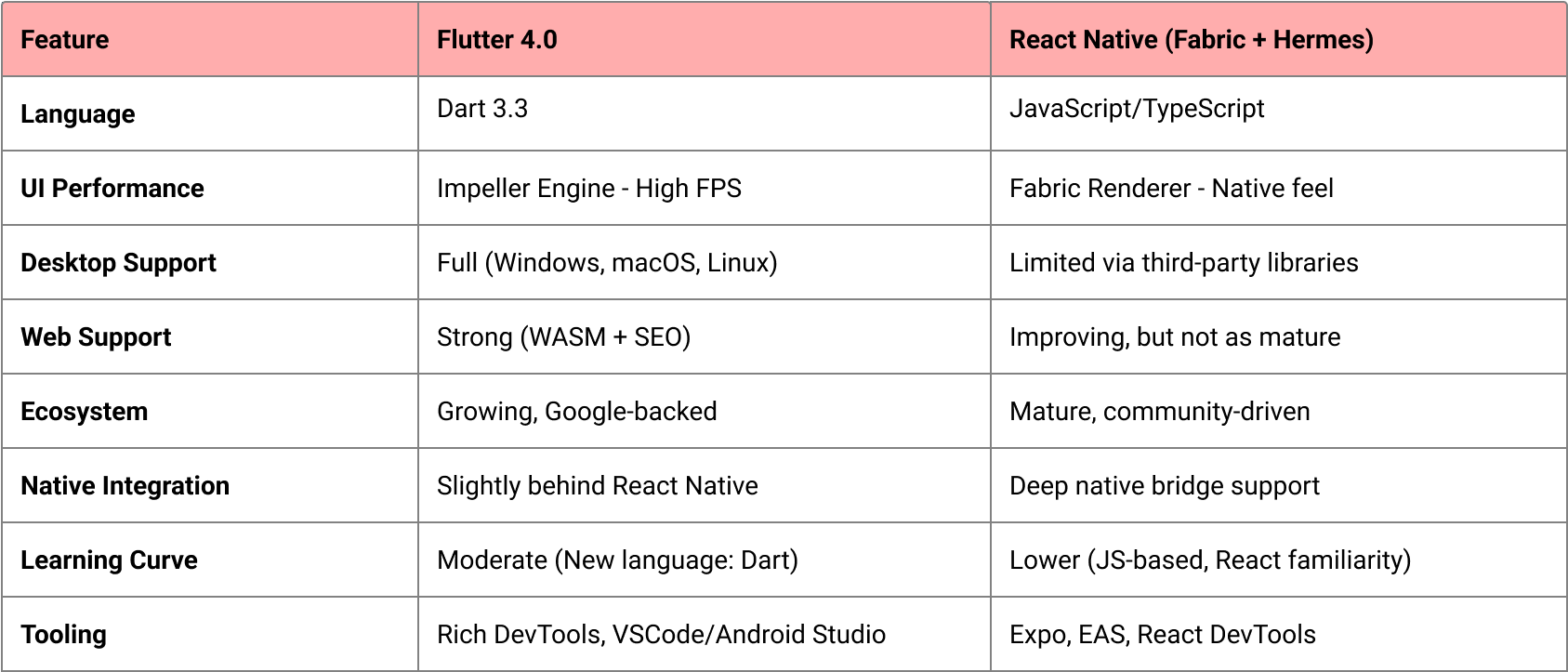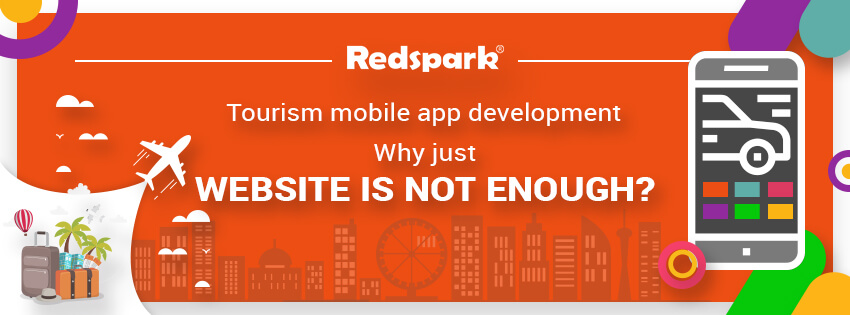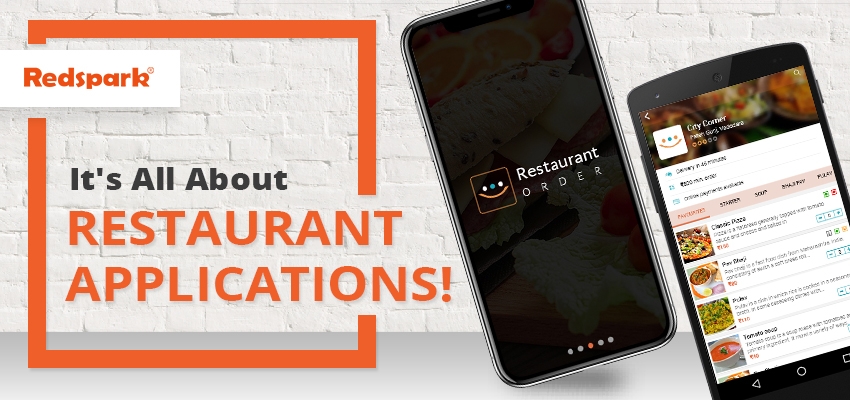Introduction
Cross-platform development has become the go-to solution for businesses looking to reach users on both Android and iOS without maintaining two separate codebases. In 2025, two of the most dominant frameworks in this space — Flutter and React Native — have evolved significantly, bringing new features, enhanced performance, and better tooling.
In this blog, we’ll explore the latest updates in Flutter, React Native, and broader trends in cross-platform development to help you decide which technology might be right for your next project.
Flutter in 2025: What’s New?
Flutter, developed by Google, has made major strides in performance, tooling, and desktop support.
1. Flutter 4.0 Released
✔ Flutter 4.0 introduces key performance optimizations and improved developer ergonomics:
✔ Dart 3.3 Integration: Enhanced type inference, sealed classes, and better concurrency support.
✔ Faster Compilation Times: Thanks to updates in the Dart compiler and build tools.
✔ Reduced App Size: New tree-shaking techniques eliminate unused code, trimming final builds.
2. Impeller Engine Default
✔ Impeller, the new rendering engine, is now the default for all platforms:
✔ Improves frame stability and rendering performance.
✔ Smooth 60/120 FPS even on low-end devices.
3. Full Desktop Support
Flutter now offers:
✔ Stable support for Windows, macOS, and Linux.
✔ Better integration with native APIs (e.g., file system, keyboard shortcuts).
4. Enhanced DevTools
✔ Improved performance profiler.
✔ Real-time widget tree debugging.
✔ Full support for Material 3 components.
5. Flutter for Web 2.0
✔ Faster load times with WASM (WebAssembly) compilation.
✔ Improved SEO support for web crawlers.
✔ Better accessibility tooling.
React Native in 2025: What’s New?
Backed by Meta, React Native has doubled down on modernization and modularity.
1. Fabric Renderer Now Default
Fabric, the next-gen rendering system:
✔ Provides faster UI interactions.
✔ Integrates tightly with the new TurboModules system.
✔ Better native component interoperability.
2. Hermes 1.4 Engine
✔ Smaller app bundle size.
✔ Lower memory footprint.
✔ Faster startup time for cold launches.
3. React Native New Architecture
Meta’s vision of modularization is now complete:
✔ All new modules use TurboModules and JSI (JavaScript Interface).
✔ Seamless native bridges between JS and platform-specific code.
4. Expo 50.0 Released
✔ Support for the latest iOS and Android SDKs.
✔ Integrated EAS (Expo Application Services) for CI/CD pipelines.
✔ One-click deployment and over-the-air updates.
5. React Server Components Integration
While still experimental, RSCs are now partially supported:
✔ Enhanced performance for hybrid apps.
✔ Better data-fetching patterns in React Native Web projects.
Cross-Platform Development Trends in 2025
Beyond Flutter and React Native, several trends are shaping the future of cross-platform development:
1. Rise of WASM (WebAssembly)
✔ Enables near-native performance on the web.
✔ Used by both Flutter Web and third-party frameworks.
2. AI-Assisted Coding
✔ Tools like GitHub Copilot and Amazon CodeWhisperer now integrate with Flutter & React Native.
✔ Speeds up UI layout creation and API integration.
3. Focus on Performance
✔ Developers are prioritizing load time, memory use, and battery consumption.
✔ Frameworks are introducing lazy loading, asset prefetching, and thread optimization.
4. Accessibility by Default
✔ Compliance with WCAG 2.2 is a major goal.
✔ Both Flutter and React Native have improved semantic roles, screen reader support, and keyboard navigation.
5. Cloud Integration
✔ Tight coupling with Firebase, AWS Amplify, Supabase, and Azure services.
✔ Prebuilt modules for auth, real-time databases, and analytics.
Flutter vs React Native in 2025: Key Differences

When to Choose Flutter in 2025
Go with Flutter if:
- You want a single codebase for web, desktop, and mobile.
- High-fidelity UI is your top priority.
- You’re building a complex app that needs consistent performance across platforms.
- You prefer a modern language (Dart) and tighter Google ecosystem integration.
When to Choose React Native in 2025
Go with React Native if:
- You already have a React/JS team.
- You need deeper access to native APIs and platform behaviors.
- You want a large plugin ecosystem and wide community support.
- Your app needs to scale fast with support for OTA updates and CI/CD.
Final Thoughts
Cross-platform development in 2025 is more powerful than ever. Flutter 4.0 and React Native’s new architecture are leading the way, each with distinct strengths. Choosing the right framework depends on your team’s expertise, project goals, and long-term vision.
No matter which route you take, the future of mobile and web development is cross-platform — and it’s never been more exciting to build for multiple devices with a single codebase.
Subscribe to our blog for more updates on app development, UI trends, and tech tutorials.




